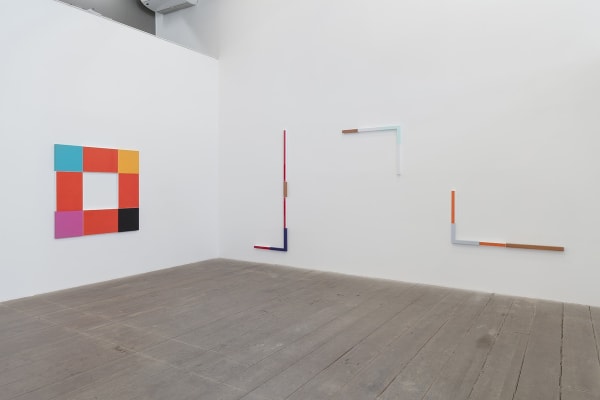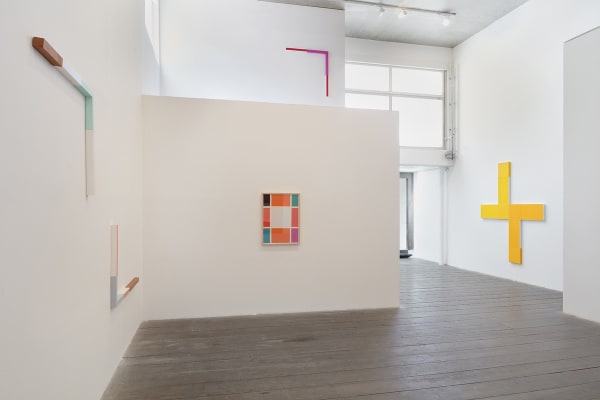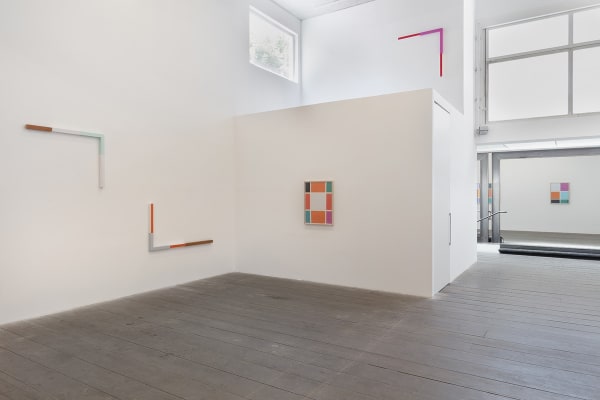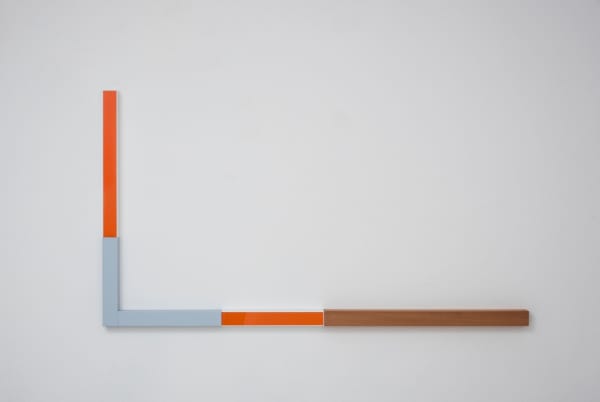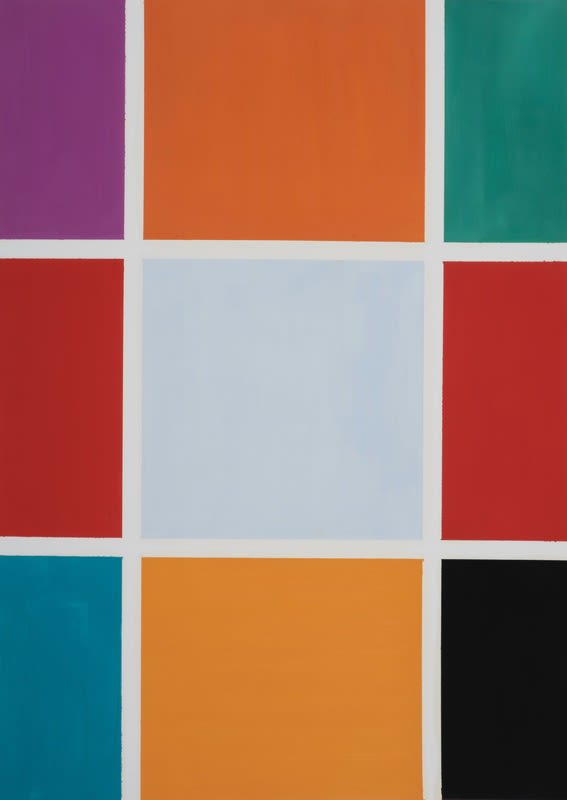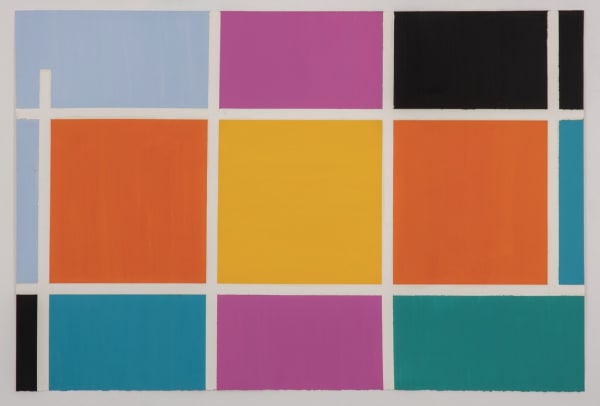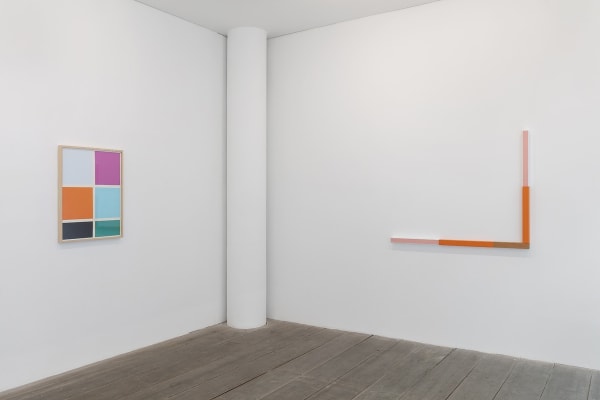RENATA TASSINARI: BEIRAS
Opening:
September 26, Thursday, from 7pm to 10pm
Exhibiting period:
September 27 to November 01, 2019
Visiting time:
Mondays to Fridays, from 10:30 to 19:00 / Saturdays, from 11:00 to 16:00
Your beauty is complete
It has the clear angles of a Mantegna
However, as a Picasso suddenly
Displaces the visual[1]
Even though she hasn’t had a solo show in the city of São Paulo since 2015, Renata Tassinari presents a sampling of her most recent work in her first exhibition at Galeria Marília Razuk. There are three sets of pieces [2] where the artist explores, in a diverse manner, striking elements of her poetics since the mid-2000s: the relations between colors from an apparently simple combining structure, and the play with the architectural space. It is also in this decade that the work will determine itself originally in the tension between the autonomy of the colors and the physicality of the material,when the artist incorporates the surface of the acrylic and the texture of the wood in the composition. At this point, the pieces gain in intensity by tensing up the limits of the painting that arise at the same time as manufactured objects and pure pictorial virtuality.
These characteristics are resumed in the current set, yet, with important variations. As in previous phases, at the base of her pictorial work, we have standardized rectangles and squares that coexist in harmony, even if the combinations at first seem dissonant.This almost impersonal way of organizing things is present in the series of drawings “Xadrez” (“Checked”) and in the large painting “Quadrado Vazado” (“Empty Square”), which can be seen in the first exhibition room. But here the large white among the coated plans of color and the empty space of the painting draws attention. In a sense, one can tell from the start that these pieces intend to displace themselves through space, in some cases even suggesting a continuity with the wall. Without a doubt, the reference is Mondrian. But it must be said: a little weird Mondrian in which the black grid becomes the thick white line made through the masks, which makes the space between the colored rectangles airy.
To a certain extent, we are also far from the objective rationality of the primary colors that dominates the Dutch artist’s creations. At this point we would say that Matisse, with his juxtaposition of improbable shades (where complementary colors coexist harmoniously next small hiatus), has been geometricized in a structure that suggest, first and foremost, the lightness and the joy of intuitive discoveries and of casual findings. Of course, there certainly is the all the science behind the combination of colors in Renata Tassinari’s work, a knowledge gained with patience throughout the years, which today is revealed inits maturity. But as an example of the kind of conquest that happens almost naturally and cumulatively, her work shows the lightness of children’s games.The black, however, remains a decisive presence, even though it no longer is a squared structure. It is, from where I see it, the constant unity that appears in different positions and sizes, and represents the deep and concrete note moderating the fluctuating vibration of the surfaces.
It will be in the series “Beiras” (“Edges”) that the spatial vocation of Renata Tassinari’s paintings achieves their highest power. In these almost-sculpture paintings that organic line of drawings becomes autonomous and incorporates color, experimenting with a now space. Shown for the first time in 2018, they can be set in various ways on the wall, sometimes disappearing in the upper area of a real corner, sometimes recreating the limits of architecture by forming drawings that displace the borders to the observer. Concise and complex, seen from a certain distance, they draw colorful lines that invoke the continuation and a possible and virtual intertwining, thus carrying out the structural ordering of the paintings in the three-dimensional universe. Between the former and the latter, the group of panels in L make the ideal passage: the empty square is opened,and the arrises, individual or in pairs, establish a movement of expansion to wards the world.
There is a certain joy,even if restrained, in this set of works. Looser, both color and line dance toa melody that breaks the monotony of the repetition of “one thing before the other” of our ever identical and boring everyday life. However, without losing the foundation that allows its accomplishment.
Taisa Palhares
August 2019
[1] From the poem “Sua Beleza”(Your Beauty), by Sophia de Mello Breyner Andresen.
[2] The author takes fullresponsibility for this division.

